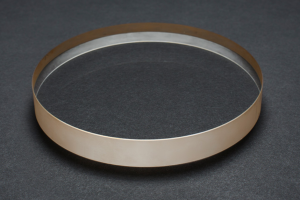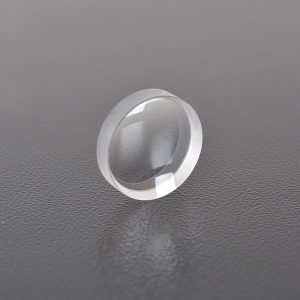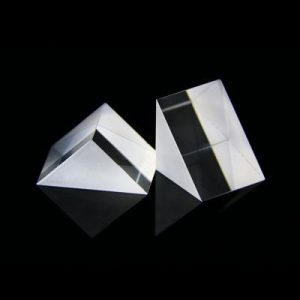
Cylindrical Prism: a Multifunctional Tool in the Optical World
Cylindrical prism refracts light only in the vertical direction through asymmetric curvature, converting point light sources into line light sources. It is widely used in laser cutting, medical diagnosis and treatment, and industrial detection. It is the core component for correcting optical distortion and optimizing VR display, and continues to promote innovative breakthroughs in quantum communication and ultrafast laser technology.
Cylindrical Lens is a special optical element with a cylindrical surface, which is usually used to focus or diverge light in a single direction. Unlike traditional spherical lenses, cylindrical prisms only have curvature in one direction, so they can change the shape of the light beam and are widely used in laser technology, optical imaging, medical equipment, and industrial detection. This article will introduce the basic principles, types, applications, and importance of cylindrical prisms in optical systems in detail.
1. Basic principles of cylindrical prisms
The core feature of cylindrical prisms lies in their asymmetric optical design. One of its surfaces is a plane and the other is a cylindrical surface. This design allows the cylindrical prism to refract light only on the plane perpendicular to its curvature, while the light is not affected on the plane parallel to it.
Specifically, when a parallel light beam passes through a cylindrical prism, the light beam will focus or diverge in the direction of curvature, while remaining parallel in the other direction. This characteristic enables the cylindrical prism to convert a point light source into a line light source, or convert a line light source into a point light source, thereby adjusting the shape of the beam.
2. Types of cylindrical prisms
According to their optical properties and uses, cylindrical prisms can be divided into the following categories:
1. Convex cylindrical prisms
The curvature of a convex cylindrical prism bulges outward, which can focus a parallel light beam into a line. It is usually used to expand a point light source into a line light source, or to correct astigmatism in an optical system.
2. Concave cylindrical prisms
The curvature of a concave cylindrical prism is concave inward, which can cause a parallel light beam to diverge. It is often used for shaping laser beams or correcting optical systems.
3. Plano-convex cylindrical prism
One side of the plano-convex cylindrical prism is flat and the other side is convex cylindrical. This design is simple and low-cost, and is suitable for most beam shaping applications.
4. Plano-concave cylindrical prism
One side of the plano-concave cylindrical prism is flat and the other side is concave cylindrical. It is mainly used for beam divergence or correction of optical systems.
3. Application of cylindrical prism
Cylindrical prisms have a wide range of applications in the field of optics. The following are some typical application scenarios:
1. Laser technology
In laser systems, cylindrical prisms are often used for laser beam shaping. For example, converting a circular laser beam into a linear laser beam for applications such as laser cutting, laser marking or laser scanning.
2. Optical imaging
In optical imaging systems, cylindrical prisms can be used to correct astigmatism or distortion and improve imaging quality. For example, in microscopes or telescopes, cylindrical prisms can compensate for the asymmetry of optical systems.
3. Medical equipment
In the medical field, cylindrical prisms are used in ophthalmic equipment (such as corneal topographers) and laser treatment equipment to help doctors diagnose and treat eye diseases more accurately.
4. Industrial inspection
In industrial inspection, cylindrical prisms can be used to generate linear light sources for detecting surface defects or dimensional measurement of objects.
5. Virtual reality (VR) and augmented reality (AR)
In VR and AR devices, cylindrical prisms can be used to adjust the light path, optimize the display effect, and enhance the user experience.
4. Design and manufacturing of cylindrical prisms
The design of cylindrical prisms needs to consider factors such as its radius of curvature, material refractive index, size, and surface quality. Commonly used materials include optical glass (such as BK7, fused quartz) and plastics (such as PMMA). During the manufacturing process, high-precision grinding and polishing techniques are required to ensure the optical performance of cylindrical prisms.
In addition, the surface of cylindrical prisms usually needs to be coated to reduce reflection loss and increase light transmittance. Common coatings include anti-reflection coatings (AR coatings) and reflective coatings.
V. Future Development of Cylindrical Prisms
With the continuous advancement of optical technology, the application field of cylindrical prisms will be further expanded. For example, in quantum communication, ultrafast laser technology and micro-optical systems, cylindrical prisms will play a more important role. At the same time, the application of new materials and new manufacturing technologies will also improve the performance and reliability of cylindrical prisms.
Conclusion
As a multifunctional optical element, cylindrical prism plays an indispensable role in modern optical systems. Its unique optical properties make it widely used in laser technology, optical imaging, medical equipment and industrial detection. With the continuous development of science and technology, cylindrical prisms will continue to promote the innovation and progress of optical technology and provide more possibilities for human beings to explore the world of light.
Hanzhong Brisun Optics Co., Ltd. Is the high precision optical element manufacturer provides customized production of Various optical lenses, including spherical lens, cylindrical lens, optical window, mirror, prism, filter, metal base mirror and other high-precision optical elements. The base materials include various optical glass, fused quartz, calcium fluoride (CaF2), zinc selenide (ZnSe), germanium (GE), silicon (SI), sapphire, metal and other materials. And provide antireflective film, high reflection film, spectroscopic film, metal film and other optical coatings.
Welcome to OEM and Purchasing!


